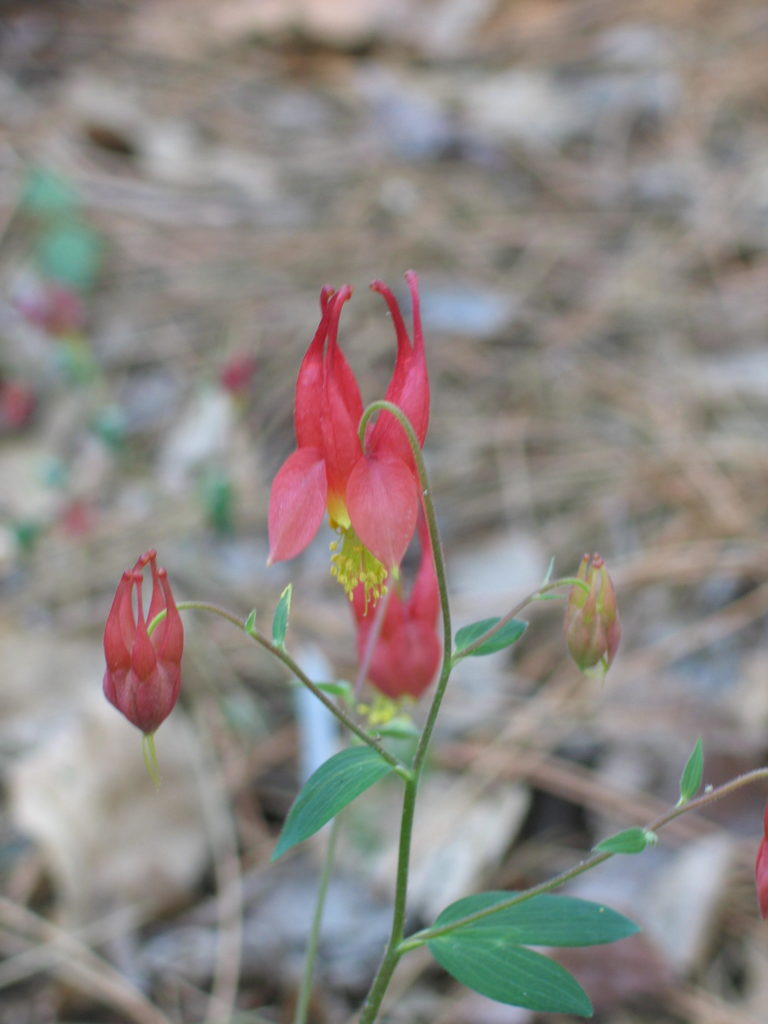As I put together lists of plants according to the season that they bloom, I often come up short on spring blooming plants. In a prairie, many plants are slow to get growing in the spring until warmer temperatures spur growth. One of the more tried and true spring blooming perennials I like to include on my lists, especially in partial sun areas, is Aquilegia canadensis, or columbine.
The Columbine flower
Columbine is one of the most popular plants for shade. However, it grows quite well in sunny spots with morning sun and afternoon shade. This spring blooming (May-June) woodland native is essentially two flowers in one! It has an inner yellow flower surrounded by a delicate spurred outer flower. These nectar-rich blooms are a favorite of butterflies, other pollinators, and even hummingbirds in the spring.

The name
Its scientific name and common name reference a couple of birds. The genus name Aquilegia comes from a combination of the Latin word “aquila” (meaning eagle for the five spurs resembling an eagle claw) and the Latin word for “columba” (meaning dove, for five doves nestled together).
The leaves
The blue-green foliage elongates in the spring, with reddish stems topped by the elegant flowers. After blooming the stems dry. I like to cut back these flower stems to the rosette of foliage. If you leave the flower stems, the brown capsules, full of black seeds, will fall and seed themselves in your garden for next season. Occasionally, the foliage will be infested with leaf miners. Simply cut the foliage back to remove the unsightly leaves and let it regrow a new rosette of lobed leaves. Then you can distribute the seeds in other areas where you would like some more plants.
Caring for Columbine
Columbine is easy to establish in partial sun to full shade conditions. It is quite adaptable, growing in wet to medium dry soils. It makes a nice combination with golden alexander, blue star, false sunflower and sky blue aster. A pink version of Aquilegia canadensis was actually discovered in Marion County, Kansas by the late Al Gantz and introduced by Dyck Arboretum of the Plains.

As you put together your plant list for a design or matrix planting, don’t overlook the obvious. Columbine is a wonderful woodland wildflower that should be brought out of the shadows. Include it in your design as a filler to add an early pop of color in the spring in your partial shade/sun site.
